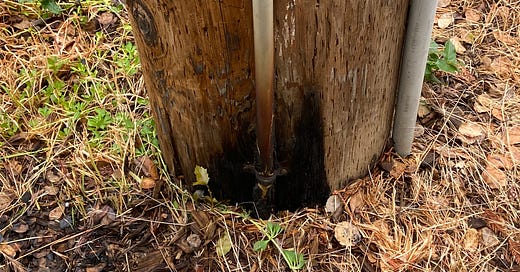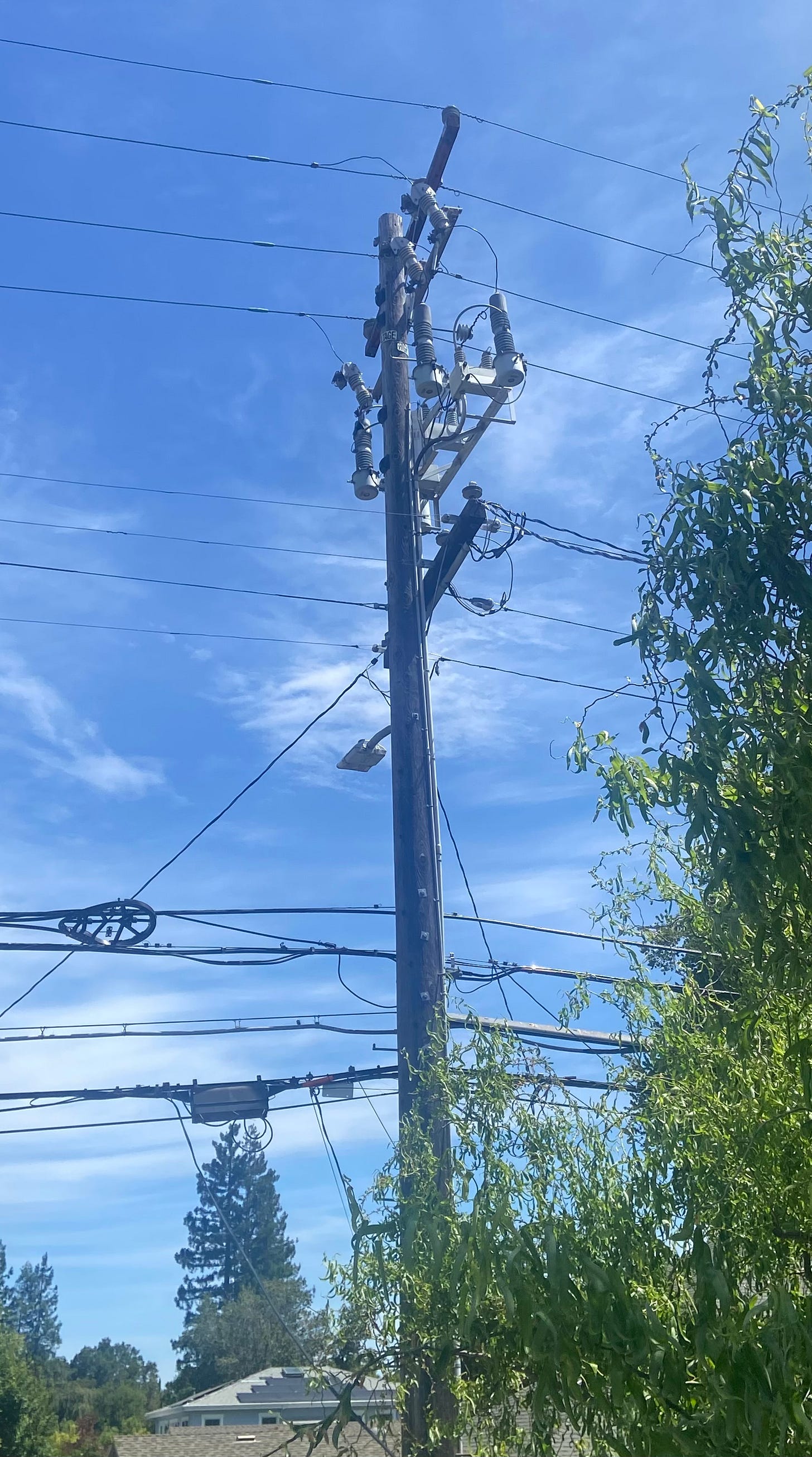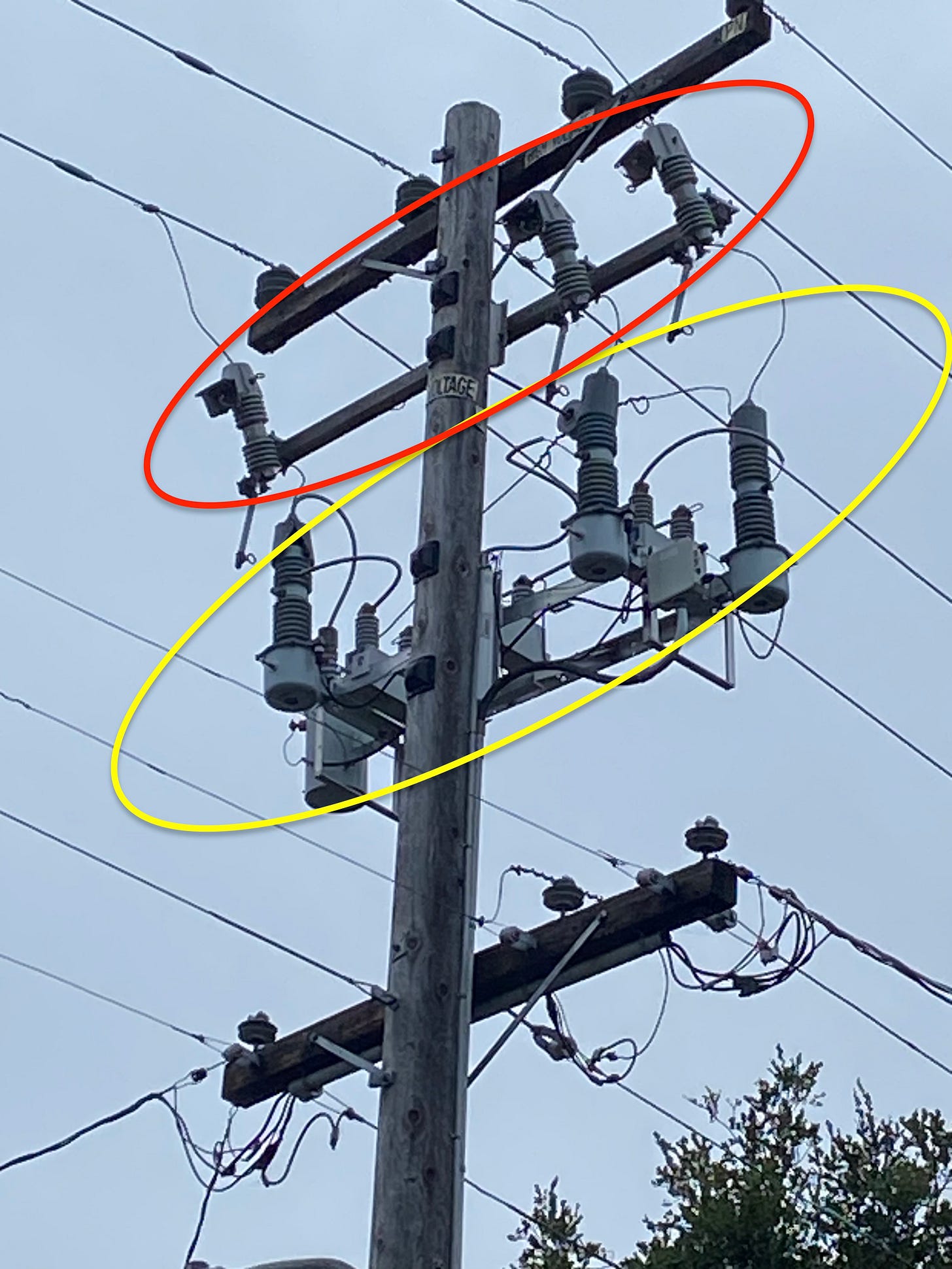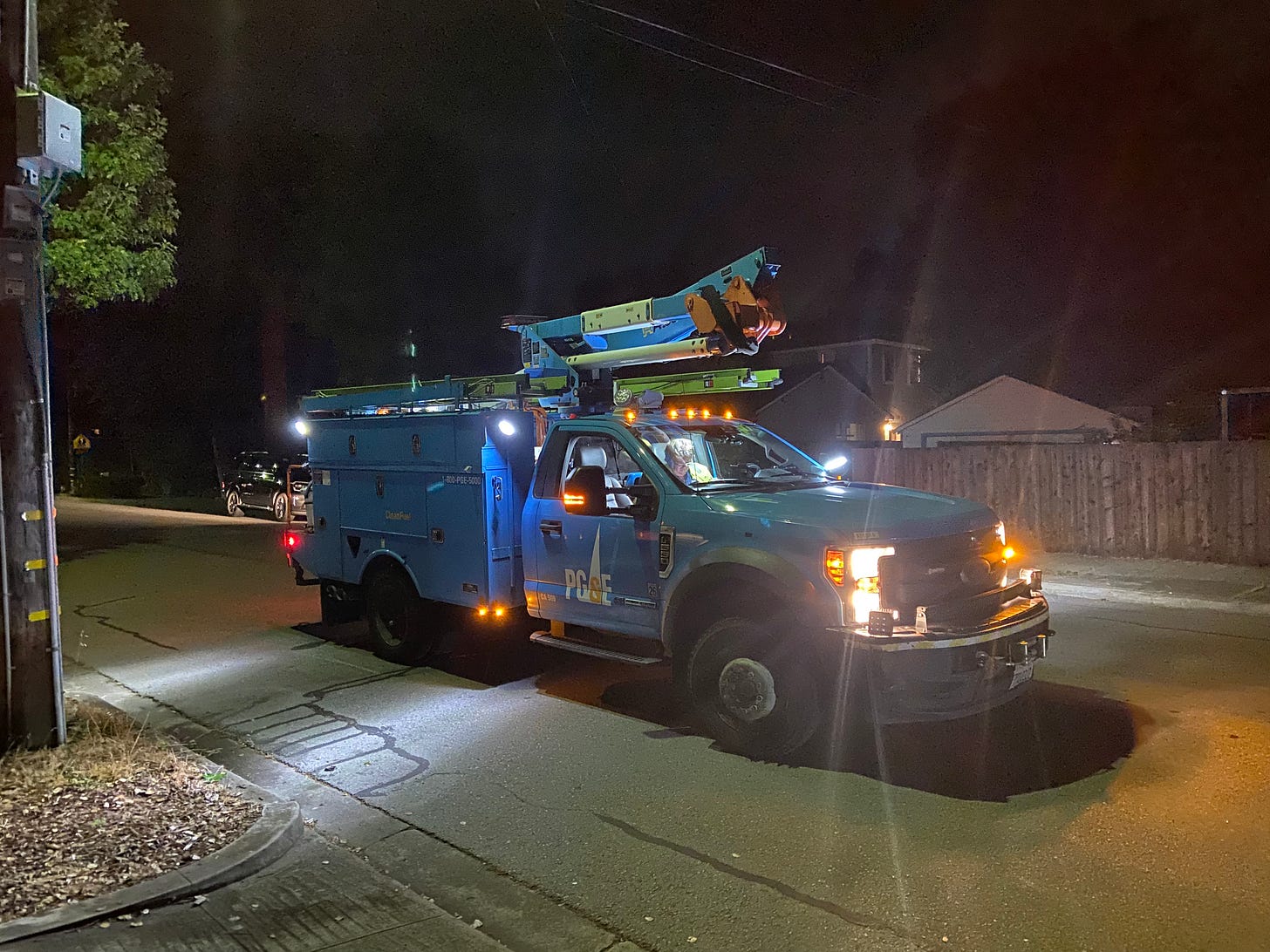A Close Encounter
We had a close encounter with a utility pole this week. A ground wire overheated and started a fire at the base of the pole, but, fortunately…
… a neighbor noticed the fire very early and they called the fire department. PG&E came later to diagnose and address the issue. I learned new things while trying to understand what happened; I hope you find the details interesting.
Utility Poles
Most of the electricity in our area is delivered to residences through utility poles. The main purpose for these poles is to host the primary distribution lines (4kV to 12kV) and the secondary lines (at 240V).
The arrangement in the pole in our block is common: primary at the top and secondary below. Some of the poles also include a step down transformer that lowers the voltage from the primary line to the residential voltage.
The poles are owned by PG&E but, since they are in a prime location, the poles are also used for other purposes like hosting other lines, fiber optic, cable TV, and telephone, and other uses like street lights.
Our Utility Pole and Our Story
Here is a picture of our utility pole
So, what caused our fire?
Below is a close-up of the section in the pole between the primary lines and the residential lines:
The components highlighted in yellow are capacitors, electrical storage devices. Capacitors come in all different sizes; grid substations have large capacitor banks but the ones here are much smaller. The capacitors in our pole are connected to the primary wires through reclosers, highlighted in red. The capacitors do not directly connect to the secondary wires.
The load in our distribution grid changes through the day and in our area we also have significant adoption of solar panels, EV chargers, and residential batteries. The capacitors in our, and other poles, help handle variations in this load.
And, nope, I didn’t know we had capacitors in our pole!
What Happened?
What happened is that the capacitor bank failed - I don’t yet know why. At that point the reclosers were supposed to trigger automatically to isolate the capacitor but only one did, the other 2 were still in the ON setting. And, as a consequence, the ground wire for the capacitors was dumping power continuously through the pole. The ground line overheated and the heat started a small fire on the vegetation in the sidewalk strip in front of our house.
The fire danger did not end until PG&E came and disconnected both remaining reclosers. Check out the video of the intervention:
Thanks to a very competent PG&E lineman!
Lessons Learned
I learned several things from this experience
DO NOT USE WATER TO EXTINGUISH AN ELECTRICAL FIRE. The 911 operator, and the PG&E operator were both adamant about that… after we had watered the fire! You don’t want to use water because it is an electrical conductor, so you are risking an electrical shock. We were lucky, don’t do that!
Our poles have capacitors!
Our DERs (Distributed Energy Resources) impact the distribution grid.
The utility pole is a good place where to add mechanisms to adjust for this load variability.
Breakers are somewhat similar, but different than, reclosers.
Electrical wires can start fires “fairly easily”.
We were lucky that our street gets a fair amount of foot traffic and that this happened early in the evening. And we will keep the area around the utility pole clean of vegetation.
Extra Readings
I ended up tracking multiple references.
Eaton and ABB are big electrical equipment manufacturer and had useful writeups:
From ABB, Reclosers and from Eaton, Breakers vs Reclosers
From Eaton: Pole Mounted Capacitor Rack and Capacitor Banks
On Utility Poles
A nice history from CPUC, all the way back to their use as telegram posts, and
A diagram from a vendor of utility poles
Current Status and Next Steps
Our pole is a bit scarred but otherwise all fine, except that the capacitor is disabled. Supposedly PG&E will come by at some point and will fix it, but everything else is operating fine. I will report back when PG&E comes back; hopefully I can chat with the employee and learn more.
It was a bit concerning that our issue was not detected automatically. I assume it is because the failure was small enough not to be noticed, and because the distribution grid is not as well instrumented as it could. I will try to learn more about all this.








FYI, the "Practical Engineering" yt channel had several recent videos I found informative about complications connecting solar power to the grid, including the need for capacitors to balance inductance (e.g. motors) on the grid:
https://youtu.be/ZwkNTwWJP5k
https://youtu.be/7G4ipM2qjfw
So far, I've found 4 utility posts in our area that have a capacitor bank, and, a bit farther away, a fifth one. The 5 are in areas that seem to have strong EV adoption and PVs.
Adding capacitors, and how it intereacts with utility poles, is a topic I had not thought about. In particular, it is very easy to add a capacitor bank to an overhead line but it must be significantly more expensive to do it to an undergrounded line.